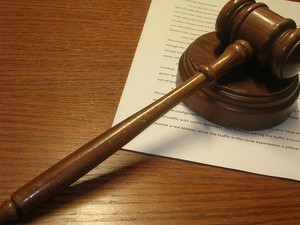Liability and Damages
Any time anyone sues anyone else for money, there are two things that must be proven for the person filing the lawsuit to be successful: liability and damages. This is true in the multi-billion dollar patent litigation between Samsung and Apple over the iPhone, and it is true in a relatively small fender-bender that results in a $5,000 verdict at arbitration. These two fundamental concepts of “liability” and “damages” are universal in this respect, even more so than the terms of art (or jargon) used to describe the person (or organization) filing the suit (the “plaintiff”) and the person (or organization) being sued (the “defendant”). Because of that universality, that is where this blog begins.
It should be clear that the person filing the lawsuit has to prove his case. That should go without saying. Courts generally do not order a person or company or other entity to turn over money until the person who wants to get paid has shown that he deserves to get paid. But, in a civil court in the United States, how does one demonstrate that they deserve to get paid? The answer is that one proves, you guessed it, “liability” and “damages.” Unless you can successfully prove both, you will not get paid. Whether you are a private citizen injured in a car accident, or a multi-national corporation claiming patent infringement, you must still establish liability and damages.
Having hammered home the fundamental nature of these concepts, let me take a moment to give some abbreviated definitions.
Liability is a moment, or perhaps several moments, in time when something happened. Someone did something or failed to do something. A decision was made regarding certain conduct. A department store left a dangerous substance on the floor. A truck driver fell asleep at the wheel. A tire manufacturer decided to cut corners in safety to save money. A surgeon forgot to remove a sponge from inside his patient. These are all examples of individuals or entities that breached their duties to others. They all failed to meet the standard that we, as a society, impose on ourselves and on professionals. This breach of societally imposed duties is the very thing that gives rise to liability. Someone failed to meet their obligations, whether to their customers, their patient, or society as a whole. When such a failure is shown, that is liability.
But liability – on its own, is not enough. Showing that someone made a mistake or failed to meet the standard to which society has agreed they should be held does not entitle anyone to money. Even in the extreme case where a surgeon has left a sponge inside the patient and has to operate a second time to remove the sponge. Such facts, extreme though they may sound, are not sufficient to entitle a plaintiff to payment. The plaintiff must still prove “damages.”
Damages, quite simply, are the consequences of “liability.” In assessing damages, juries are compelled to ask the questions like, “How was this person’s life effected by someone else’s mistake or bad conduct?” “What position would this person be in if there had been no bad conduct?” “What loss has resulted from the liable person’s actions or inaction?” Damages are sometimes proven as specific amounts of money – medical bills and lost wages are two examples.
There are, however, noneconomic damages that are often appropriate. Think of the example with the surgeon who has left the sponge in a patient. That person may have suffered a painful infection before the mistake was detected. There may be additional scarring as a result of a second surgery. These damages cannot be quantified in dollars and cents, yet the people who suffer such damages are entitled to compensation. The American system of civil justice only allows for payment of money damages, even in cases where no amount of money will properly compensate the aggrieved party for their loss. Money does not make scars go away or bring back loved ones who have been killed as a result of another’s mistake or bad judgment.
Thus, it is possible to have liability without damages. Imagine a trucker who falls asleep at the wheel, but doesn’t injure anyone. Clearly, the trucker has breached the duty imposed on him by society (as well as state law and a number of federal and state regulations). However, if there are no damages, there can be no lawsuit, even where the breach of duty is so egregious.
The opposite scenario is also true: sometimes there are damages, but no liability. This is true in a number of cases – members of a society can act with the requisite amount of care and people can still get hurt. A risky medical procedure that is otherwise necessary, may not be successful. A dangerous condition on the floor of a department store may have appeared and caused injury before anyone from the store could reasonably be expected to find the condition. Just because someone gets hurt does not automatically mean that they will be successful in a lawsuit.
The information here is grossly oversimplified and future entries will expand on these two fundamental ideas that are present in every case we handle. My hope is that, by beginning with this brief introduction to “liability” and “damages,” future discussions and entries will make more sense.
